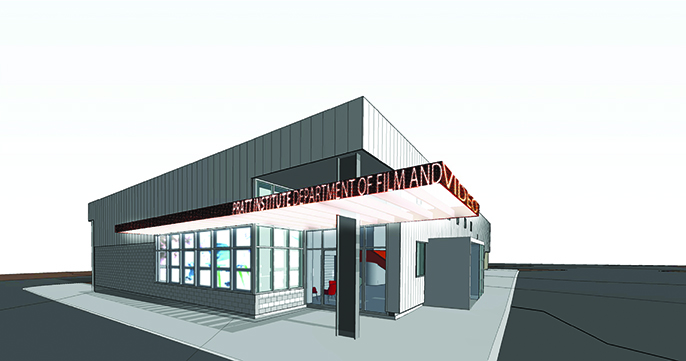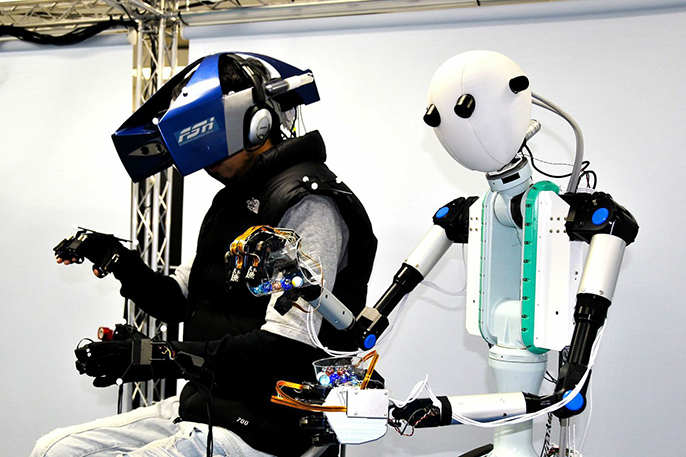 The Film/Video Department will launch its updated curriculum in its new Myrtle Avenue building, set to open in 2014.
The Film/Video Department will launch its updated curriculum in its new Myrtle Avenue building, set to open in 2014.
The camera is the new pen.
People have communicated their ideas in writing for millennia, but today they’re also turning to video, according to Leighton Pierce, acting dean of the School of Art and Design. “Most students come to school now with some experience making videos, regardless of their educational interests,” he says. “Video is no longer just for people who want to make filmmaking their career. It has become integral to all disciplines.”
With that fundamental shift in mind, Pratt is launching a new era of Film/Video on campus. The program will soon relocate to 550 Myrtle Avenue, the former location of the Pratt Store, with greatly updated facilities including two sound stages, a sound-mixing facility, a screening room with 100 seats—which may be used for public screenings or pre-screenings for industry professionals and independent filmmakers—as well as studios and classrooms featuring the latest equipment. Construction is set to begin this summer, and the building will open fall 2014.
The undergraduate program expects to more than double its enrollment from 78 to a projected 180 to 200 students by 2016. Already, applications to Pratt’s Film/Video program have increased steadily in the last ten years from 95 in 2002 to 175 in 2012, a trend that aligns with film schools nationwide.
While providing a solid education in traditional fiction and documentary modes, the recently-updated undergraduate Film/Video curriculum also takes advantage of Pratt’s resources across artistic disciplines. Film students are required to study in departments such as Fashion, Media Studies, Communication Design, Fine Arts, Photography, etc.
Pierce says, “We are educating technically adept and conceptually adaptable video artists and designers—people who will lead the development of new applications for video rather than simply training students for traditional industry roles.”
Reflecting this philosophy, the department is developing a master’s film degree program and several minors, involving cross disciplinary studies between fashion and filmmaking as well as fashion and interior design.
Pierce is also confident the new building will draw applicants. “It is beautifully designed with many high-tech features that will help us promote ourselves,” he says.
The new facilities are being designed by architectural firm WASA/Studio A, which was the firm that designed Myrtle Hall, Pratt’s sustainably-designed, LEED gold administrative and academic building at 536 Myrtle Avenue. The city is planning a $6-million facelift of the blocks in front of the Film/Video building, creating a broader pedestrian walkway with new bus stops and landscaping, a permanent art installation, game tables, and a water fountain.
Pierce adds, “All of these physical and curricular changes will transform Pratt’s Film/Video program for both students, faculty, and the community, allowing for an extraordinary learning and teaching experience that aligns with current technological and cultural advances in the industry.”
Text: Ruth Samuelson

 Gateway Editors
Gateway Editors
